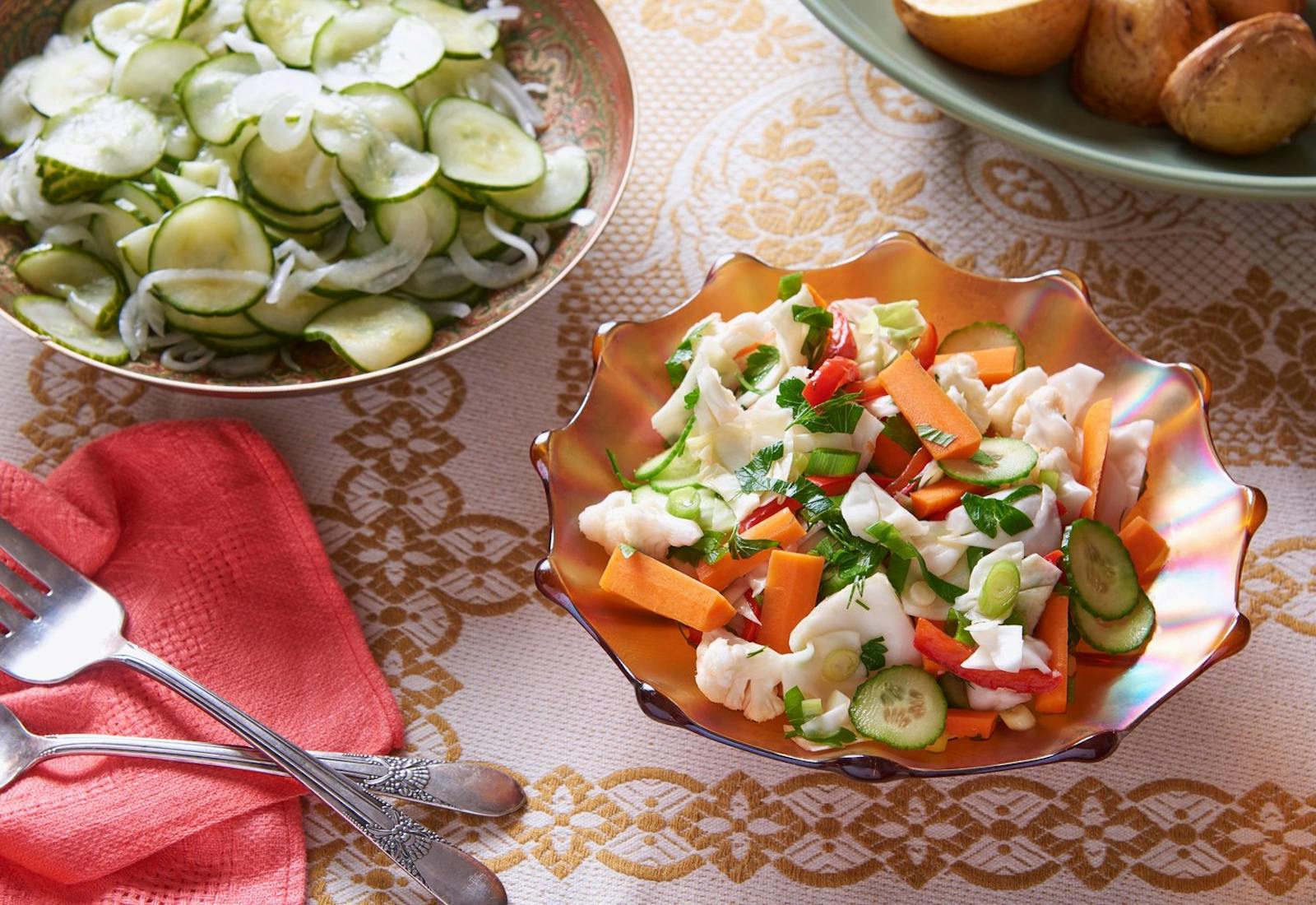Shared by Mitchell Davis


This recipe was shared by Mitchell Davis. Read more about his family in "For Mitchell Davis, the Meal Is the Holiday" and try his recipes for baked fish in sweet and sour sauce, beef brisket, and pickled cucumber salad.
Prepare the vegetables by slicing the cabbage, cutting the cauliflower into small florets, peeling and slicing the carrots, kohlrabi, and daikon, and slicing the pepper, or preparing any other vegetables you are using. Smaller pieces will ferment more quickly. Pack the vegetables into a nonreactive container, such as plastic, glass, or ceramic, with a lid.
Make the brine by dissolving the salt in 2 cups of water, heating in 1-minute intervals in the microwave or on the stove until fully dissolved. Once the salt is dissolved, add 6 cups of cold water to bring the brine to room temperature, then stir in the peppercorns, chili pepper, and spices.
Pour the brine over the vegetables until fully covered. If you need more brine, prepare it using the same ratio by dissolving 3 tablespoons of salt in 4 cups of water. Cover the container(s) and let them sit at room temperature for 2-5 days, fermenting until the vegetables reach your desired taste and texture. Open the containers at least once a day to release any built-up gas (“burping”), and taste the vegetables daily to monitor the flavor. On the first day, you may see little change; by the second day, small bubbles may appear. By the third day, fermentation will be more noticeable, with bubbles, a distinct aroma, and cloudy brine. Some surface residue may form — this is normal and not a cause for concern.
When the vegetables have reached your desired level of tanginess, and perhaps a little fizz, stop the fermentation by lifting them out of the brine and rinsing with cold water. Place the vegetables in a clean container, then strain the brine over them and refrigerate until ready to use. (Chef’s note: Save the brine for future batches of pickles—it can be reused up to five times and also incorporated into cooking. Use it in salad dressings, soups, savory baked goods, and other condiments, much like you would miso or soy sauce.)
To assemble the salad: combine the fermented vegetables. Add the cucumber, scallions, dill, herbs, if using, and olive oil. Toss and taste. Adjust the acidity with vinegar if necessary, and season with pepper. The salad will keep two or more weeks in the fridge.